Yesterday evening at 19:28 (German time), HALO with the WISE instruments onboard landed at Shannon airport. The flight from the DLR site in Oberpfaffenhofen was used not only as a transfer but to investigate some of the WISE scientific goals on the way. Therefore instead of going to Shannon directly, the transfer was enlonged to a 10-hour research flight passing by Southern Norway, up north beyond the polar circle and coming down over Iceland. Eventually, a hexagonal flight pattern for tomographic evaluation was added above the North Atlantic crossing over from Iceland to Ireland.
Yesterday we had our last StratoClim measurement flight here in Kathmandu. Currently no follow up project with the Geophysica is planned. During the preparation phase on the apron it was raining, matching the mood of seeing the Geophysica taking off for the last measurement flight.
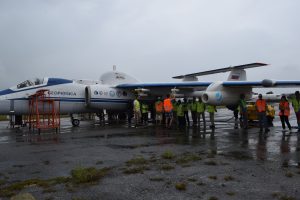
Looking for protection against the rain under the wing of Geophysica, before the last measurement flight.
Problems with the exact coordinates of the planned flight track appeared and communication with the airport tower led to a take-off delay of 1,5h with running instruments. Even though it was not really warm outside, some instruments running so long on the ground had problems with overheating.
Altogether, the campaign was a huge success with 8 measurement flights in the Asian monsoon. After the cancelled test campaign in Kiruna, Sweden due to political issues and the replacement phase 1 campaign in Kalamata, Greece with flooding issues and challenging conditions in the hangar, the well organized and smoothly running campaign here in Kathmandu is a pleasant surprise. A meeting to present measurement results is planned for November in Rome.
Personally, I experienced this campaign as easy going, especially compared to the last campaign in Kalamata. The instrument I am working with operated throughout all 8 measurement flights, without any complications.
As a highlight ending, a Mt. Everest sightseeing flight with Buddha Air happened this morning for everyone from StratoClim, who wanted to join for a fair price. Because we work in their hangar, the organization of the flight with Buddha Air was easy.
Since the StratoClim campaign has now finished, this is the last blog entry from me. However, another atmospheric campaign is starting soon in Shannon, Ireland with the German research aircraft HALO, which you will be informed about in this blog.
Every day a flight planning group sits together and discusses the current and forecast meteorological situation in and around Nepal (in the Asian monsoon region). The position and development of the Asian monsoon anticyclone, incoming typhoons, temperature at different heights and enhancement of different substances are looked at.
Additionally, the planned flight track is determined by the flight clearances. We don’t have any flight permission to go over Tibet and have to apply for flight permission over India and Bangladesh each time prior to flight. This limits the flight track for some flights only to Nepal. However, prior to the campaign some possible, preliminary scientific flights have been planned (that include flight tracks over India to the Bay of Bengal) and flight clearances for those flight tracks were requested for random days (each flight clearance is permitted for three days) during the campaign.
The Geophysica tank enables a flight duration of usually around 4 hours, which limits the area that can be reached.
All those components determine which route is chosen for a scientific flight. Listening to the flight planning team is very interesting.
As an example I added the following picture from yesterday’s flight planning meeting for a flight planned for Sunday (August 6th ). The purple and especially white areas on the picture present regions with a very fast transport of air masses from the ground to around 16.5 km height. This fast transport happens in the Asian monsoon, but also and even faster in occurring typhoons. The white area on the picture shows the air approaching Bangladesh from a typhoon near Japan and its predicted development for Sunday. The flight track that is planned is indicated with red dots and connecting blue lines, from Kathmandu to India and Bangladesh close to the typhoon air. This means that during this flight we could be able to measure the strong convection in the Asian monsoon but also the influence of the typhoon coming in.
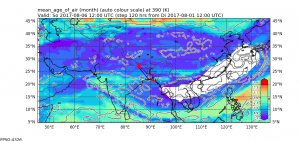
This picture originates from the flight planning tool MSS (http://mss.rtfd.io/) showing CLaMS data.
The CLaMS model, developed at IEK-7 Forschungszentrum Jülich, shows here the
mean age of air (transit time since contact with the surface) on Sunday at 12 am
UTC time at 16.5 km altitude. (picture by Felix Ploeger).
Yesterday, the fourth flight of this campaign took place and the next one is planned for tomorrow (Friday) in the morning. Both those flights are restricted over Nepal. In Nepal we are currently pretty much in the center of the Asian monsoon anticyclone and can therefore probe the anticyclone well. Besides investigation the inside of the Asian monsoon anticyclone, the edge and outflow region are also of high interest during this campaign, however until now the edge has not been reached with the aircraft.
Yesterday after the flight we took a group picture of everyone in the StratoClim community, who is here.
Prior to the first measurement flight an EMC-test is scheduled to ensure e.g. that no measurement instrument on the aircraft interferes with the aircraft electronics. For this purpose the Geophysica is rolled out together with all measurement instruments, engines of the aircraft and the instruments are switched on and the electromagnetic field around the aircraft and at the cockpit control is measured. During flight and the actual EMC test, only with running engines the instruments can draw current for operation. For yesterday, this EMC test was scheduled, and the aircraft together with all instruments were ready to be tested (see picture), but the airport tower did not approve the start of the engines. Today the EMC-test was also not possible so that it is now planned to be carried out tomorrow (July 26th).
Some equipment did not reach the campaign site on time and is still missing. The earliest arrival of this equipment is estimated to be tomorrow (July 26th). Before the equipment arrives, no measurement flight can take place. This (but also the delayed EMC-test) delays the campaign phase. The official campaign ending is scheduled for August 14th, but a possible shift of this date by a few days is currently discussed.
However, the biggest step for the startof the campaign was the arrival of the research aircraft Geophysica. Here are some spectacular pictures of the Geophysica landing in Kathmandu from July 20th at 6:13 a.m. local time:
The colleagues in Kathmandu found some time to explore the region
… and the view from the hotel is also not bad
Finally after years of challenges and struggles the main campaign of StratoClim to investigate the asian monsoon has started!!
The research aircraft, M55 Geophysica, landed at the campaign site in Nepal, Kathmandu today (see picture) and is now ready to carry our atmospheric instruments into the upper troposphere and stratosphere during the asian monsoon.
But why is the investigation of the asian monsoon so important?
The asian monsoon is seen as a major pathway for tropospheric gases into the stratosphere, bringing large air masses quickly from the ground into high altitudes. In the stratosphere, atmospheric gases have a more direct impact on the climate, as they directly interact with solar radiation. The investigation of the asian monsoon transport mechanisms is the main goal of this measurement campaign. The improved understanding of these processes in and around the asian monsoon from this campaign will contribute to global climate models, which will, as a result, give more accurate predictions of the climate development, providing important information for climate change policy making. The M55 Geophysica reaches altitudes of 20 km and is therefore suitable to bring our instruments in the area of interest.
Personally, I am not yet in Kathmandu, but will be there to give on-site information in August.
Two out of four planned measurement flights have already been made. Collected data show a lot of potential for nice atmospheric studies and analysis. One group is especially excited after they saw that during the last flight Geophysica – like predicted – really went through an ice cloud (which they study with their instrument).
Next week is the last week of the campaign here in Kalamata, Greece and although one week seems like a long time, with all of the preparation it is hard to fit two more measurement flights in. One was originally planned for today, but unfortunately one instrument showed some major technical problems yesterday night, so this morning the flight for today was spontaneously cancelled. Many of us used that decision to take a day off after 7 days of long and hard work (and although we are on a campaign, where weekends don’t exist, it’s still Saturday 😉 ), others are back in the hanger to fix/improve some components of their instrument. I use the spare time to write another blog entry.
The next flight will either take place on Monday or Tuesday.
The preparation for one of those flights already starts the day before, when all instruments are installed. For our instrument (AMICA) for example, a crane has to be ordered to lift it to the top of the aircraft.
Early in the morning of the flight day, usually around 6 until 7 a.m. scientists come to the hangar to do some last minute preparation (for example warming up the instrument, fixing the inlet, software or logger programming …).
At 7:30 Geophysica is pulled out of the hanger and rolled to the apron. On the apron all scientists have to wear a high-visibility-vest.
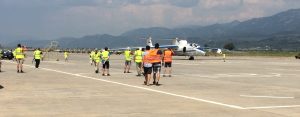
high-visibility-vests are requested on the apron. A shortage of vests can lead to colleagues sharing one 😉
A minute by minute schedule, considering the need of every instrument, is followed. In general: The aircraft is connected to Ground power, instruments are switched on, the pilot takes his seat, engines of the aircraft are switched on, the Ground power is disconnected and Geophysica is ready to fly (at around 9:30 a.m.).
One point that on paper is estimated to take 5 minutes, but really takes around half an hour is ‘pilot takes his seat’. Because Geophysica is a high altitude aircraft (up to 21 km) the pilot is dressed in something that looks more like an astronaut costume to me, rather than a normal pilot uniform. He is connected to oxygen bottles and the whole process is more complex, than just sitting down. One measurement flight takes around 4 hours and it is really exciting to see the aircraft taking off and landing,
.. which we will see again in a few days.
HALO will take-off for the first scientific flight of the POLSTRACC/GW-Lcycle/GWEX/SALSA campaign today at 13:30. Details will follow soon.
Follow HALO’s flight live under:
GLORIA-WATCH

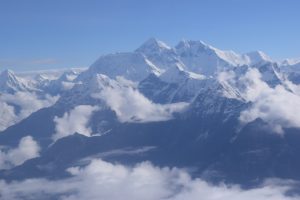
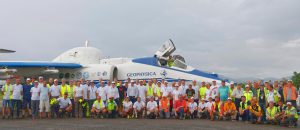

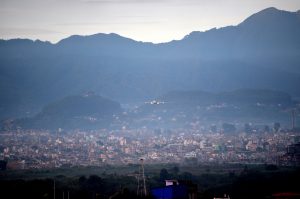
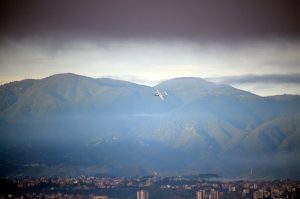
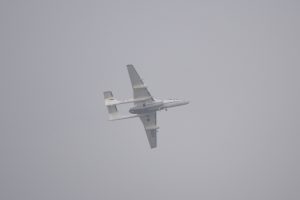
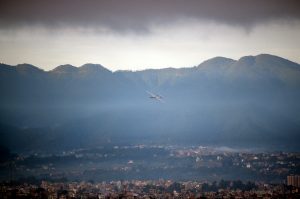

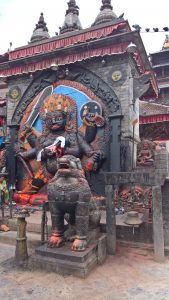
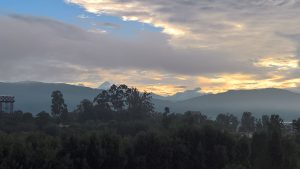
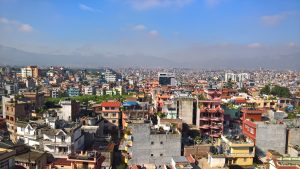
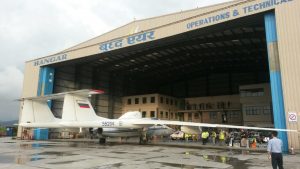
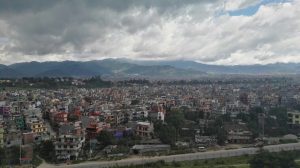
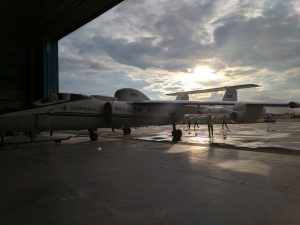
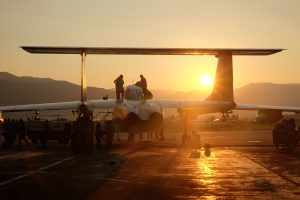
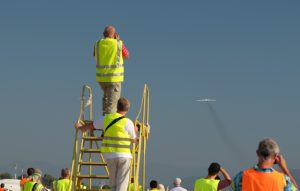
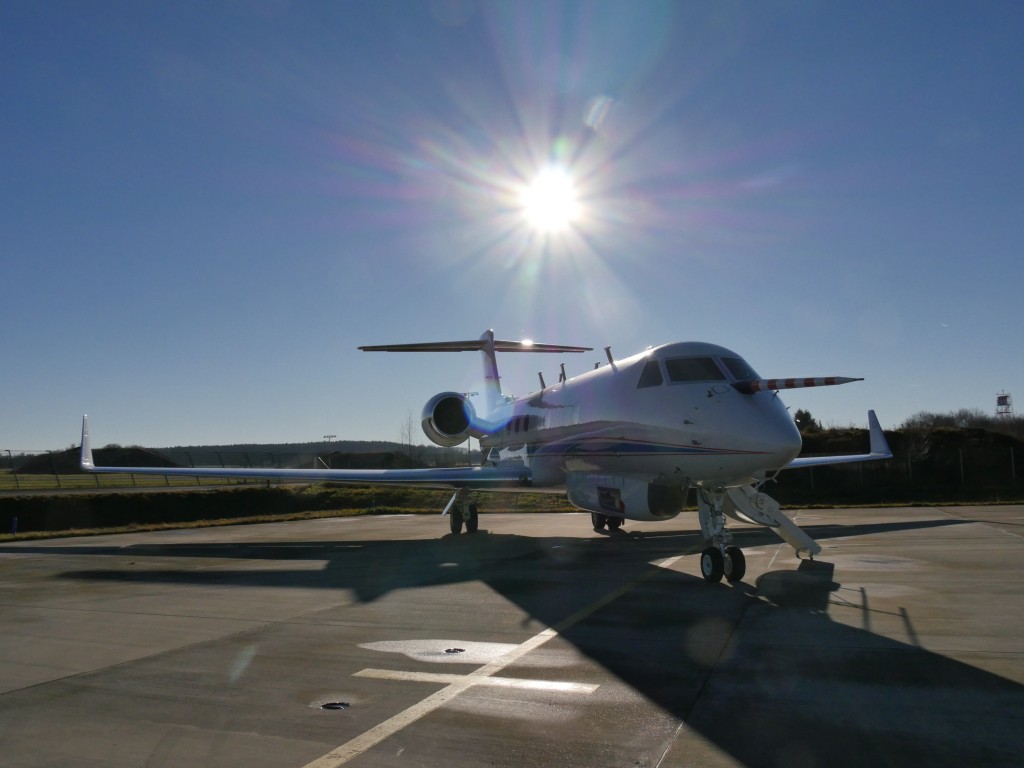
Recent Comments